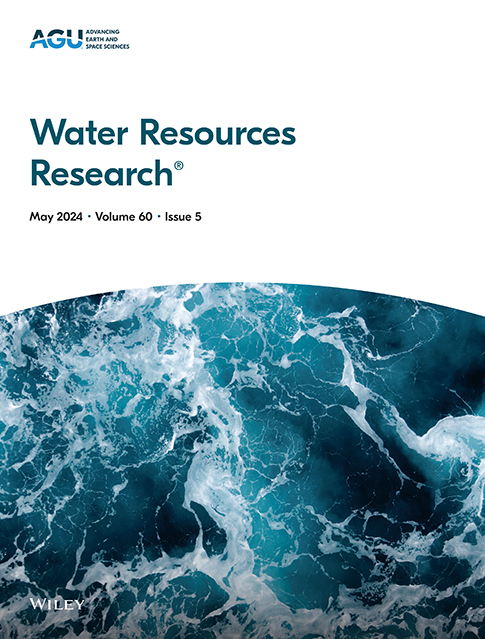Direct Observations of Solute Dispersion in Rocks With Distinct Degree of Sub-Micron Porosity
IF 4.6
1区 地球科学
Q2 ENVIRONMENTAL SCIENCES
引用次数: 0
Abstract
The transport of chemical species in rocks is affected by their structural heterogeneity to yield a wide spectrum of local solute concentrations. To quantify such imperfect mixing, advanced methodologies are needed that augment the traditional breakthrough curve analysis by probing solute concentration within the fluids locally. Here, we demonstrate the application of asynchronous, multimodality imaging by X-ray computed tomography (XCT) and positron emission tomography (PET) to the study of passive tracer experiments in laboratory rock cores. The four-dimensional concentration maps measured by PET reveal specific signatures of the transport process, which we have quantified using fundamental measures of mixing and spreading. We observe that the extent of solute spreading correlate strongly with the strength of subcore-scale porosity heterogeneity measured by XCT, while dilution is enhanced in rocks containing substantial sub-micron porosity. We observe that the analysis of different metrics is necessary, as they can differ in their sensitivity to the strength and forms of heterogeneity. The multimodality imaging approach is uniquely suited to probe the fundamental difference between spreading and mixing in heterogeneous media. We propose that when multi-dimensional data is available, mixing and spreading can be independently quantified using the same metric. We also demonstrate that one-dimensional transport models have limited predictive ability toward the internal evolution of the solute concentration, when the model is solely calibrated against the effluent breakthrough curves. The data set generated in this study can be used to build realistic digital rock models and to benchmark transport simulations that account deterministically for rock property heterogeneity.求助全文
约1分钟内获得全文
求助全文
来源期刊

Water Resources Research
环境科学-湖沼学
CiteScore
8.80
自引率
13.00%
发文量
599
审稿时长
3.5 months
期刊介绍:
Water Resources Research (WRR) is an interdisciplinary journal that focuses on hydrology and water resources. It publishes original research in the natural and social sciences of water. It emphasizes the role of water in the Earth system, including physical, chemical, biological, and ecological processes in water resources research and management, including social, policy, and public health implications. It encompasses observational, experimental, theoretical, analytical, numerical, and data-driven approaches that advance the science of water and its management. Submissions are evaluated for their novelty, accuracy, significance, and broader implications of the findings.
 求助内容:
求助内容: 应助结果提醒方式:
应助结果提醒方式:


